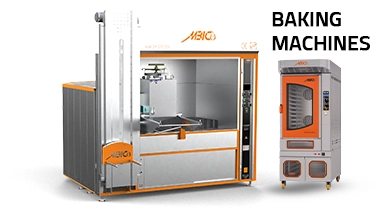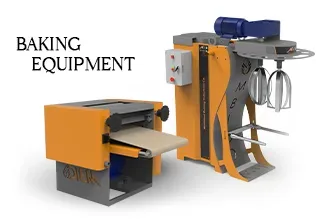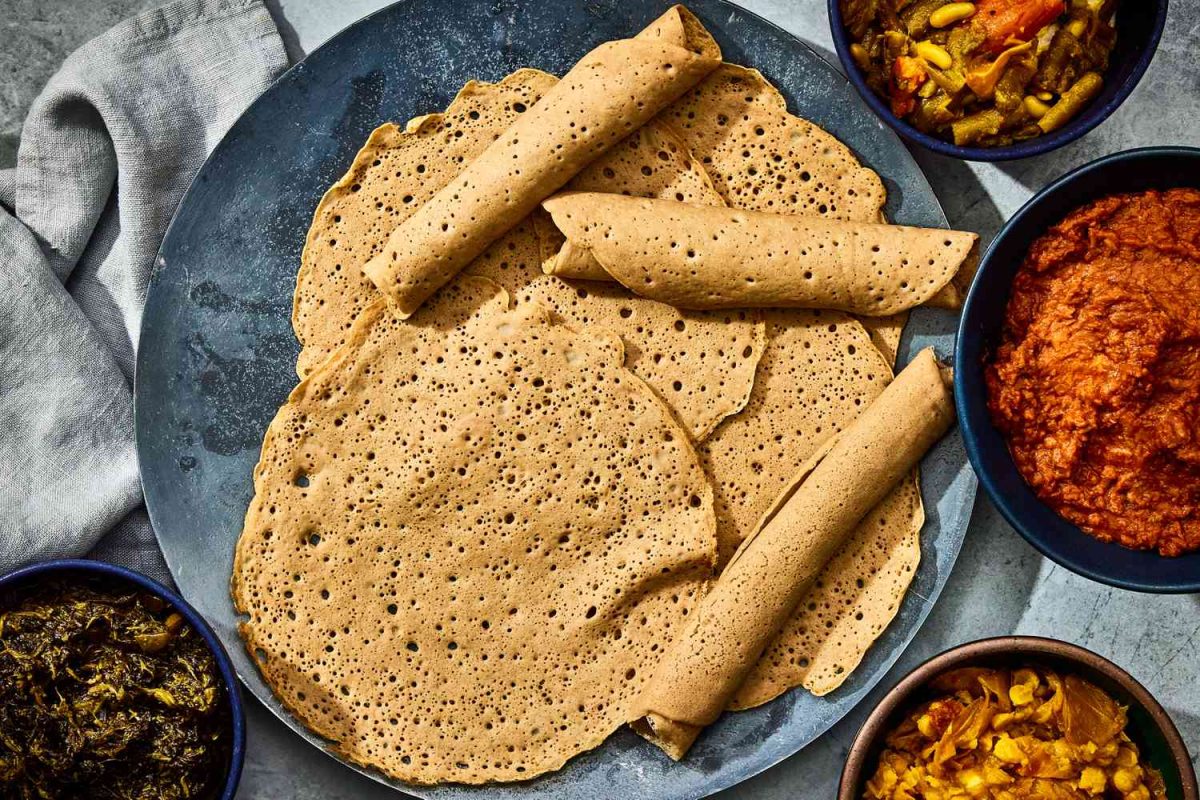Recipe
Injera Recipe: Mastering the Art of Ethiopian and Eritrean Flatbread
The first time I tried to make Injera, I was convinced I had accidentally invented a new form of edible paper mâché. It was dense, brittle, and utterly lacking the characteristic “eyes” – those beautiful, airy pores that define a truly great Injera. My kitchen smelled faintly of disappointment, and I found myself staring at a stack of unyielding discs, a far cry from the spongy, tangy perfection I’d savored in Addis Ababa.
Many home bakers and even seasoned professionals grapple with the unique challenges of traditional fermented flatbreads. It’s a dance between ancient grains, wild fermentation, and precise cooking techniques. You’ve likely faced similar frustrations, wondering how to coax that perfect texture and elusive sour note from your batter. You’re not alone; mastering Injera is an art form, steeped in culinary science and cultural heritage.
But what if you could unlock the secrets to consistent, authentic Injera, achieving professional results right in your own kitchen? That’s where the right understanding and the right tools come in. At MBICO, we understand the profound connection between tradition and technology. As a leading manufacturer of high-quality bakery equipment, we are dedicated to empowering bakers, from artisanal producers to industrial giants, to preserve the authenticity of traditional breads while achieving unparalleled consistency and scale.
By the end of this article, you will have a deep understanding of the scientific principles behind Injera’s unique characteristics and learn the exact techniques to apply them in your own kitchen, transforming your baking from frustration to triumph.
The Ancient Grain at its Heart: Teff and the Art of Injera
Injera’s magic begins with Teff, a tiny, gluten-free grain native to Ethiopia and Eritrea. It’s far more than just a flour; it’s the cornerstone of this unique flatbread’s identity, dictating its texture, flavor, and fermentation behavior.
A Grain Like No Other: Understanding Teff Flour
Teff is an extraordinary grain, defying conventional expectations. While it’s naturally gluten-free, its high protein content (around 11-15%) and unique carbohydrate structure play a crucial role in Injera’s development. Unlike wheat-based doughs where gluten forms a network to trap gases, Teff batter relies on its specific protein matrix and starch gelatinization to create its characteristic spongy structure. In my years of running a professional bakery, I’ve found that misunderstanding this fundamental difference is often the first hurdle bakers face. Treating Teff like wheat flour will inevitably lead to disappointment.
Scientifically, Teff flour possesses a unique rheological property that allows it to hold carbon dioxide produced during fermentation, even without gluten. The interaction of its proteins and starches, combined with optimal hydration, forms a stable batter capable of rising and creating those sought-after “eyes” during cooking. It’s a testament to ancient agricultural wisdom meeting sophisticated food science.
The Magic of Fermentation: Creating the Characteristic Tang
The sour taste that defines Injera comes from lactic acid fermentation, a process akin to sourdough, but with its own distinct microbial community. The traditional method uses an “abshir” – a starter culture created from previous Injera batter, much like a sourdough starter. This abshir is a living ecosystem of wild yeasts and lactic acid bacteria (LAB).
These microorganisms feast on the sugars in the Teff, producing carbon dioxide (for leavening) and a medley of organic acids, primarily lactic and acetic acids. It’s the lactic acid that imparts Injera’s signature tangy flavor profile. The fermentation duration, typically 1-3 days depending on ambient temperature, is critical. Too short, and the Injera will be bland and flat; too long, and it can become excessively sour and fragile. Based on the principles outlined in ‘Modernist Bread’, controlling temperature and starter activity are paramount for reproducible results. While some bakers swear by a long cold ferment, others achieve great results with a shorter, warmer proof. Here’s the science behind both: colder temperatures slow fermentation, allowing for deeper flavor development, while warmer temperatures accelerate gas production, which can be beneficial for certain textures. The key is understanding these biological processes to manipulate them to your advantage.
The Craft of Batter and Bake: From Mixture to Mat
Once the Teff has fermented, the transformation from humble batter to magnificent flatbread requires precision in both consistency and cooking.
Achieving the Perfect Batter Consistency
Hydration is paramount for Injera. The batter needs to be quite thin, almost like a crepe batter, to spread evenly on the cooking surface and create the delicate, lacy texture. Typically, Injera batter can have a hydration level upwards of 150-200% relative to the flour weight. This high water content allows for proper starch gelatinization and steam production during cooking, contributing to the airy crumb. My experience has taught me that a well-hydrated batter also promotes more active fermentation and allows the “eyes” to form consistently.
After fermentation, a portion of the batter is often cooked into a thin slurry (called ‘absit’) and then re-introduced to the main batter. This step helps thicken and stabilize the batter, ensuring a smoother pour and better structure. This technique highlights the sophistication embedded in traditional baking, bridging simple ingredients with complex hydrocolloid principles.
The Art of the Griddle: Cooking Injera to Perfection
Traditionally, Injera is cooked on a “mogogo,” a large, round electric griddle or clay plate. The unique aspect of cooking Injera is the rapid, high-heat cooking on one side only. As the thin batter hits the hot surface, steam rapidly expands, creating the distinctive “eyes” or pores on the surface, while the bottom crisps slightly. The top remains soft and moist, cooking purely from the residual heat. A specialized bakery oven or griddle designed for even heat distribution is crucial for achieving consistent results.
For large-scale production, specialized bakery equipment ensures uniform heat and precise cooking times, which is essential for maintaining authenticity and quality. The rapid heat transfer causes the water in the batter to flash into steam, inflating the batter and creating those signature bubbles. As the batter sets, these steam pockets are trapped, resulting in the spongy texture. It’s a delicate balance of temperature and timing; too hot, and it browns too quickly without forming eyes; too cool, and it will be dense and gummy.
Beyond the Basics: Troubleshooting and Elevating Your Injera
Every baker, no matter their experience, encounters challenges. The key is understanding the science behind the problem.
Common Injera Challenges and Scientific Solutions
- No “Eyes” (Pores): This usually points to insufficient fermentation (not enough CO2 production) or a batter that is too thick. Ensure your starter is active, fermentation time is adequate, and your final batter consistency is pourable, not pasty.
- Too Sour or Not Sour Enough: Temperature control is your best friend. Warmer temperatures accelerate lactic acid production, while cooler temperatures slow it down. Adjust your fermentation environment or time accordingly.
- Crumbly or Brittle Texture: Often a sign of insufficient hydration or overcooking. The batter might be too thick, or the cooking surface might be too hot, leading to excessive drying.
- Sticking to the Griddle: A poorly seasoned mogogo or insufficient heat can cause sticking. Ensure your cooking surface is properly preheated and non-stick.
Injera in the Modern Kitchen: Adapting Traditional Techniques
While the mogogo is ideal, excellent Injera can be made with modern equipment. A large, flat non-stick pan or an electric griddle can work wonders, provided they maintain a consistent, high temperature. Even some high-quality pizza and food ovens equipped with a baking steel or stone can replicate the intense, even heat needed, though the single-sided cooking method requires careful adaptation.
The principles remain the same: high, even heat for rapid cooking and steam generation, and a carefully managed fermentation process. Modern kitchen tools can help us achieve the consistency that traditional methods perfected over centuries, bridging the gap between historical craft and contemporary convenience.
Mastering Injera is a journey of patience, observation, and a deep appreciation for the microbiology and chemistry at play. From the unique properties of Teff to the intricate dance of fermentation and the precision of the cook, every step contributes to this extraordinary bread. Experiment with your starter, fine-tune your batter’s consistency, and pay close attention to your cooking temperatures.
This weekend, I challenge you to adjust your Injera batter’s fermentation time by a few hours, based on the ambient temperature in your kitchen, and observe the nuanced differences in both flavor and texture. You might just discover your perfect Injera.







Explore MBICO's categories
Bakery equipment
13 Products
bulk and semi-bulk bread baking ovens
3 Products
Bulk Breads Baking equipment
14 Products
Confectionery equipment
7 Products
Mini ovens
3 Products
Pizza and food ovens
4 Products
Baking equipment
25 Products
Bakery oven
5 Products
Tafton baking ovens
3 Products
Barbari baking ovens
4 Products
Sangak bakery ovens
3 Products
Lavash baking ovens
3 Products
Pastry and confectionery ovens
3 Products
Baking ovens
10 Products
Mobile baking machines
4 Products
Explore MBICO's products
Dough Divider Machine
Pastry Dough Sheeter
4-Roll Dough Sheeter
Dough Rolling Machine
Automatic Production Line for Baking Sangak Bread
Bread Slicing Machine
Portable Rotary Semi – Automatic Oven for Baking Traditional Breads
Fermentation Chamber